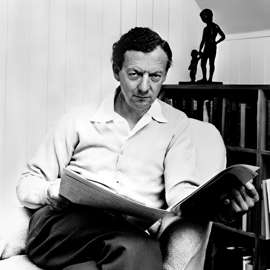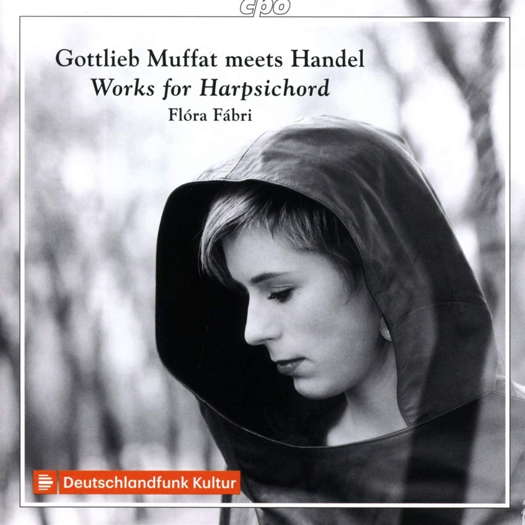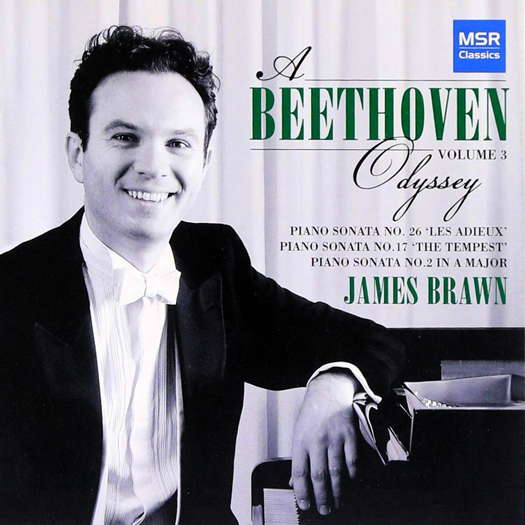 SPONSORED: Ensemble. Last Gasp of Boyhood. Roderic Dunnett investigates Jubilee Opera's A Time There Was for the Benjamin Britten centenary.
SPONSORED: Ensemble. Last Gasp of Boyhood. Roderic Dunnett investigates Jubilee Opera's A Time There Was for the Benjamin Britten centenary.
All sponsored features >>

Fine and Engaging Harpsichord Music
GERALD FENECH listens to works by Gottlieb Muffat and George Frideric Handel
'Flóra Fábri's technique is solid as a rock, and her judgement of rubato and ornamentation is absolutely unblemished.'
Georg Friederich Händel (1685-1759) was born in Halle, Germany, but in 1712 he went to London and became one of the most famous and influential baroque composers of his age. Indeed, he became a British citizen in 1727 and spent the greater part of his career in London. But before all this, he received his training in his home town, and later worked as a composer in Hamburg and Italy. He was strongly influenced by the great composers of the Italian baroque and the German polyphonic tradition, and he himself would later exert a huge influence on Mozart and Beethoven, not to mention a host of other composers.
Listen — Handel: The Harmonious Blacksmith (Suite V in E, HWV 430)
(track 4, 1:30-2:19) ℗ 2020 Deutschlandradio :
The largest part of his output was directed towards the genres od opera and oratorio, composing some forty of the former and twenty of the latter, but his oeuvre also comprises a substantial number of anthems, concerti grossi and organ concerti, apart from his instrumental pieces, which are not a few. Within fifteen years, Handel had started three commercial opera companies, but by 1740 Italian opera started to fall out of fashion and the composer subsequently turned his attention to oratorio, a genre that brought him huge success, particularly 'The Messiah' of 1742, which to this day is regarded as his absolute masterpiece.
Almost blind, and having lived in England for nearly fifty years, he died in April 1759, a respected and rich man. His funeral was attended by more than three thousand people and he was given full state honours. He is buried in Westminster Abbey.
To really close this minute Handel chapter I would like to bring to your attention a very pivotal event in Handel's life. In 1704 the composer's career might have been cut tragically short in a strangely bizarre incident after a fierce quarrel with fellow composer Johann Mattheson. For some unknown reason, the two found themselves on opposite sides of a duel. Mattheson almost killed Handel with his sword, but fortunately the weapon struck a button on Handel's chest rather than the chest itself, and the composer survived. Well, thank God for that.
Gottlieb Muffat (1690-1770) was the son of Georg Muffat. He served as an advanced scholar under the renowned Johann Fux in Vienna from 1711, and was appointed third Court organist at the Hofkapelle in 1717. He was assigned additional duties over time, including the post of instructor of members of the Imperial family, among them the future Empress Maria Theresa. He was promoted to second organist in 1729, and got the top position upon the accession of Maria Theresa to the throne in 1741. He retired from official duties at the court in 1763.
Muffat's compositional catalogue is primarily limited to keyboard music. His contrapuntal skills were considerable, and this was all too evident in the short liturgical fugues published in Vienna in 1726. These pieces reflect a conservative approach to liturgical music, but all the same, they are extremely well crafted and deserve more recognition. His second publication, Componimenti musicali per il cembalo (Augsburg, 1736) is more progressive in its style, and this collection of six suites is more lavishly ornamented than the 72 Versetti with 12 Toccatas of ten years earlier.
Unfortunately, much of Muffat's output remains unpublished, so this issue is more than welcome as it gives one the chance to evaluate better the fine pieces that this composer left for posterity.
Listen — Gottlieb Muffat: Ciacona in G (Componimenti musicali 1739)
(track 10, 0:01-0:53) ℗ 2020 Deutschlandradio :
One may ask why Muffat is paired with Handel? Well, the answer is simple. Although they never met, both had a strong admiration for each other, and both borrowed from each other. Handel, in particular, is much more 'guilty' in this regard, but one must keep in mind that in those particular decades it was the custom to dip into the music of other composers and make it your own. Indeed, the first two pieces on this CD, the fourth and fifth Suites by Handel, include a fair amount of music composed by Muffat, so this programme can be regarded as being wholly dedicated to Muffat's works.
The other two pieces are completely original creations by the latter. The Ciacona in D and the Suite No 3 are prime examples of Muffat's ability to write extremely attractive music with the least of forces at his disposal.
Listen — Gottlieb Muffat: Finale (Suite No III in D, Componimenti musicali 1739)
(track 18, 2:22-3:19) ℗ 2020 Deutschlandradio :
This is a superb issue of some really fine and engaging harpsichord music. Both composers were highly skilled musicians and these works are of the highest quality, full of invention, melody and expressive writing. Flóra Fábri's technique is solid as a rock, and her judgement of rubato and ornamentation is absolutely unblemished. No wonder she brings out the delightful nature and variety of these pieces with joyous aplomb. Sumptuous sound quality and some intriguing annotations complete a CD that should serve the tastes of a wide range of music lovers, harpsichord enthusiasts in particular.
Copyright © 28 December 2020
Gerald Fenech,
Gzira, Malta

CD INFORMATION: GOTTLIEB MUFFAT MEETS HANDEL



